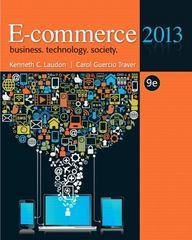Question
Description Imagine that after graduating from Deakin, you become an economist for an international consultancy firm. As an economist, you've been asked to analyse how

Description
Imagine that after graduating from Deakin, you become an economist for an international consultancy firm. As an economist, you've been asked to analyse how households reacted to policies regarding wage changes over the years in both Australia and Mexico. Results of your analysis provide insight on the household characteristics in both countries. Moreover, it would help to predict the behavior of the Australian and Mexican households to future policies regarding a change in their wage rates. With this objective, you are particularly asked to compare the consumption and working habits of an average Australian household and average Mexican household in 2009 and 2019.
You can review the "average annual worked hours per employee" and "average annual disposable income (single person, no children)" over years via the following links:
https://data.oecd.org/emp/hours-worked.htm
https://data.oecd.org/hha/household-disposable-income.htm
The questions you need to answer are listed below after the section on Specific Requirements.
Specific Requirements
Please answer the questions below with adequate detail and clarity. Pay attention to the quality of your writing. Good written communication skills are valued in the profession. When doing diagrammatical work, make sure to label the axes, show details such as marking intercept lengths, labelling relevant points and bundles and showing arrows where appropriate.
Assume the followings whilst answering the questions:
- A household spends income between two goods: "leisure/freetime per day" and "consumption per day". While drawing diagrams, please place "leisure/freetime per day" on the horizontal axis and" consumption per day" on the vertical axis.
- A household's preferences are represented by usual shaped strictly convex indifference curves.
- "Leisure/freetime" represents the rest of the day from "working time". For example, if a household spends 8 hours on working per day, then they spend 16 hours on leisure/freetime per
day. There are 24 hours in a day.
- Both goods are homogenous and divisible, so that they can both be consumed in fractional
quantities.
- Price of per unit consumption is 1$ and price of per unit leisure/freetime is determined by wage
rate, w$.
- Keep the numbers up to 4 decimal places, e.g., 12.3456
7. For simplicity, calculate some of the relevant data as follows:
- Average annual free time = (24 x 365) - (Average annual hours worked per employee)
- Average wage = (Average annual household disposable income) / (Average annual hours
worked per employee)
- Average freetime per day = (Average annual freetime) / 365
- Average comsumption per day = (Average annual disposable income) / 365

Step by Step Solution
There are 3 Steps involved in it
Step: 1

Get Instant Access to Expert-Tailored Solutions
See step-by-step solutions with expert insights and AI powered tools for academic success
Step: 2

Step: 3

Ace Your Homework with AI
Get the answers you need in no time with our AI-driven, step-by-step assistance
Get Started


